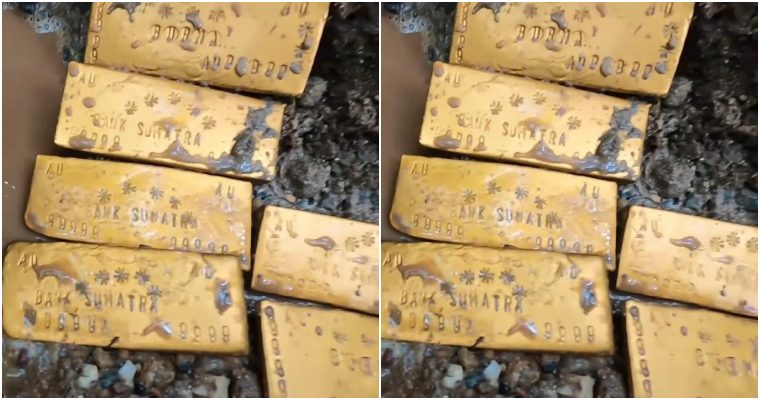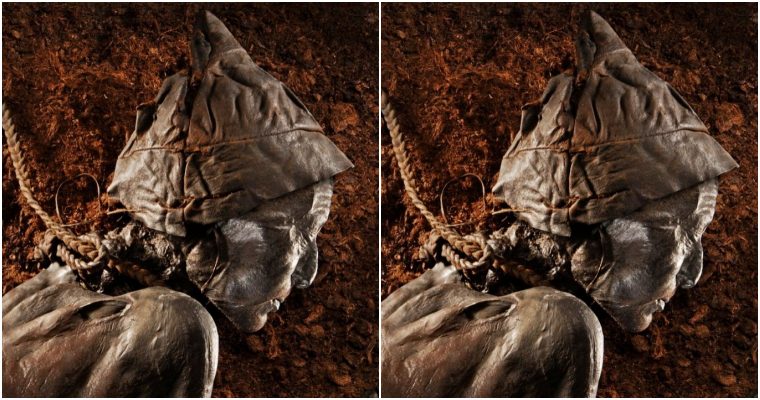While bulldozing land for a new burial ground, workers startled to discover an old one, belonging to a newly identified culture
All they meant to do is expand a local cemetery. But as gravediggers in Krasnoyarsk, Siberia, were removing a hill to make room for the newly deceased in 2018, they made an unexpected discovery.
That hill turned out to be an ancient burial mound created by a Scythian-type culture over 2,000 years ago.

The question is which Scythian-type culture.
Our story begins in the 19th century, when a new cemetery called Shinnoye was established on the outskirts of Krasnoyarsk, the second biggest city in Siberia.
Little did the founders know that the land nearby had already been “used”.
A century later, excavation of what remained of the ancient burial mound began in autumn 2021 and continued the next summer by a team of archaeologists from the Siberian Federal University, led by Dmitry Vinogradov.
In fact, around 150 ancient burial mounds are now known to have existed around Krasnoyarsk, but most were destroyed in the course of city development during the 20th century. This was the first to be excavated in the region in 65 years.


The chamber of death
It is indeed unfortunate that while expanding the modern cemetery, the ancient mound was bulldozed. Valuable data was destroyed, but based on old photographs and descriptions from an archaeological survey almost a century ago, the mound had been round and about 30 meters in diameter.
However, the knowledge about it was lost over the years. Its existence was only rediscovered by the bucket of the bulldozer a century later.

Luckily, the tomb beneath survived the bulldozing and turned out to contain dozens of bodies in a large rectangular pit, that had been walled with timber and carpeted in birch bark.
The upper part of the tomb was damaged by the worksbut parallels with tombs from the era suggest it once had a wooden roof, thus creating what is known as a box tomb, Vinogradov explained.
Preliminary counts suggest the tomb may have contained as many as 50 people buried with grave goods ranging from beads to bronze plaques, miniature symbolic bronze daggers and battle axes, as well as knives, mirrors, and needles; and ceramic vessels that had contained foods: all items the deceased might have “needed” in the afterlife, Vinogradov speculates.
One plaque depicted a stag, a popular motif in Siberian Scythian animal art.
But the question remained, which Scythian-type culture this was.

Signs of Scythians
The Scythians are known mainly as the “barbarians” living in Crimea and north of the Black Sea, according to classical authors, mainly Herodotus from the fifth century B.C.E. However, the Eurasian steppe belt, as far east as northeastern China, was home to numerous horse-riding nomadic and semi-nomadic archaeological cultures that the Russian school of archaeology calls “ Scythian”.
Make no mistake. Scholars today do not ascribe to a theory of some broader unified “Scythian” nation or culture. Rather, the name refers to a triad of Iron Age archaeological features: certain styles of bronze weaponry; horse-riding gear; and art featuring real and mythical animals – mainly stags, wild felines, birds of prey and mythical griffons.

A lot of cultures throughout the sprawling Eurasian steppe belt featured the “Scythian triad” of artifacts, but the ethnic, genetic or anthropological connections between them – if any – remain unclear and highly debated, especially concerning the most far-flung of the “Scythian-type” communities.
For example, Scythian-type archaeological cultures in the Minusinks basin in Siberia are not thought to have any relationships with the classical Scythians in Crimea or the Northern Black Sea, but rather to be related to closer people in Siberia’s Altai mountains.
It can also be said that from the Bronze Age onward and continuing into the Iron Age, there were connections between northeastern China and the Minusinsk basin in Siberia, but researchers still debate who influenced who and how. In any case, these “Scythian” cultures encompassed the full gamut of lifestyles, from nomadic to semi-nomadic to sedentary.
One of the more famous “Scythian-type” cultures is the Pazyrysk living in the Altai mountains, Kazakhstan and Mongolia, best known for the Princess of Ukok and her beautiful tattoos.
Another famous Scythian-type culture is the Tagars, a semi-nomadic people who dominated the Minusinsk Basin during the late Bronze Age and Iron Age.
On a number of grounds, the archaeologists suspect that the burial mound inadvertently unearthed by the latter-day gravediggers in Krasnoyarsk is associated with the Tagars.

In the early phase of their culture, the Tagars buried their deceased individually in stone box graves. In later phases, the fashion tended to large-scale wooden box tombs featuring multiple bodies, perhaps accruing over generations. And when the grave was full, the whole lot would be set collectively on fire.
Burning the dead
The large number of skeletons in the newly discovered tomb may attest that it served as a family tomb used for generations, Vinogradov suggests. When the tomb was full, it was sealed off, set on fire and left to burn.

This conclusion is supported by the colour and nature of the soil, which attests to high temperatures – and the fact that the bones had become mixed up inside, making the work for the physical anthropologist quite challenging.
Usually, after burning, the tomb would be covered in soil, and that is what created the burial mound known throughout the steppe as kurgans.
However, death in the community did not end with the construction of our kurgan, as indicated by the discovery of ten pit burials around it. In fact, it was not rare for Tagar kurgans to feature later pit burials dug inside them as well. Luckily for posterity, the pits also survived the destructive claw of the bulldozer.
Each pit burial contained one or more individuals. Contrary to the wooden chamber of death, these tombs were not ignited. The dead were laid to rest in different positions – on their backs, chest, or side.
Some skeletons survived the vagaries of time while others were less lucky, lacking any surviving bones, let alone articulation (anatomical order).
Nor was there a pattern to the dead in the pits: they contained both different sexes and all ages, including children. Only three contained grave goods, such as pottery and bronze, the same type as found within the wooden tomb.


From ashes, a new culture is born
The kurgan in Krasnoyarsk is similar to others in the Minusinsk basin, south of Krasnoyarsk. These types of kurgans are often associated with the Tagar culture (8th – 1st-century B.C.E).
The Tagar culture is divided into several stages. The style of our particular kurgan is similar to those from the later stages of this culture, from about 2,400 to 2,100 years ago.
The Tagars inhabited the basin from the 8th century B.C.E., the late Bronze Age. Toward the last centuries of the first millennium B.C.E, migration processes in the basin forced them to move northward, including to the territories surrounding the modern city of Krasnoyarsk.
If in the early stage of their culture, the Tagans buried their dead individually, collective burials followed by cremation of the full graves marked the later phase of the culture: That was something completely new, Vinogradov explained.
Another hallmark of this final stage is that the dead were no longer buried with real bronze goods but rather miniaturized versions of these items, which presumably were of symbolic significance, the scholars believe.
Based on archaeological finds over the years in the region, some scholars have been suggesting that the late stage of the Tagar culture in the second and first centuries B.C.E., be considered a separate stage, which they call the “Tesinian culture” based on the site where these archaeological traits were first observed, on the banks of the River Tes in the Minusinsk Basin. In fact, the “Tesinian distinction” was first suggested by the late archaeologist and historian Mikhail Gryaznov (1902 – 1984), a leading scholar of the steppe cultures. .
These Tesinians retained Tagarian traditions, from pottery style to burying the dead in kurgans with miniature items.
While the Tagars did use iron, the metal only became common during the Tesinian stage and the metal started to appear in burials as well, a feature associated with the following Tashtyk culture.
Another practice whose roots we see in the Tesinian period was burial with plaster masks. These masks would become a hallmark of the later Tashtyks.
By the time of the Tashtyk culture, which flourished in the area from the 1st to the 4th century C.E., we no longer see miniature bronze items but rather iron and wooden items.
Hence, scholars today believe the final stage of the Tagar culture should be classified as a separate culture, because of the various new traditions they have observed.
They believe this Tesinian culture arose from mixing between the Tagars and other populations coming from Central Asia during this time.


At this point however there are more questions than answers, Vynogradov explains.
So, based on the character of the burial mound and the goods, the kurgan is believed to belong to the transitional Tesinian culture and to date to the second or first century B.C.E. And that is the story of the first ancient mound in Krasnoyarsk to be excavated in 65 years, which revealed a people who emerged on the outskirts of the known territories of the Tagars, and may be unique and different from anything we knew before.
And perhaps further archaeological investigation will teach us about what might have driven the Tagars north into these territories, and who were the Tesinians they became; and how and when they lived, and how they died.








